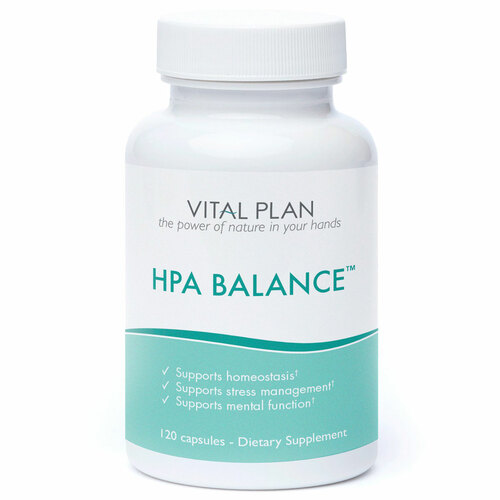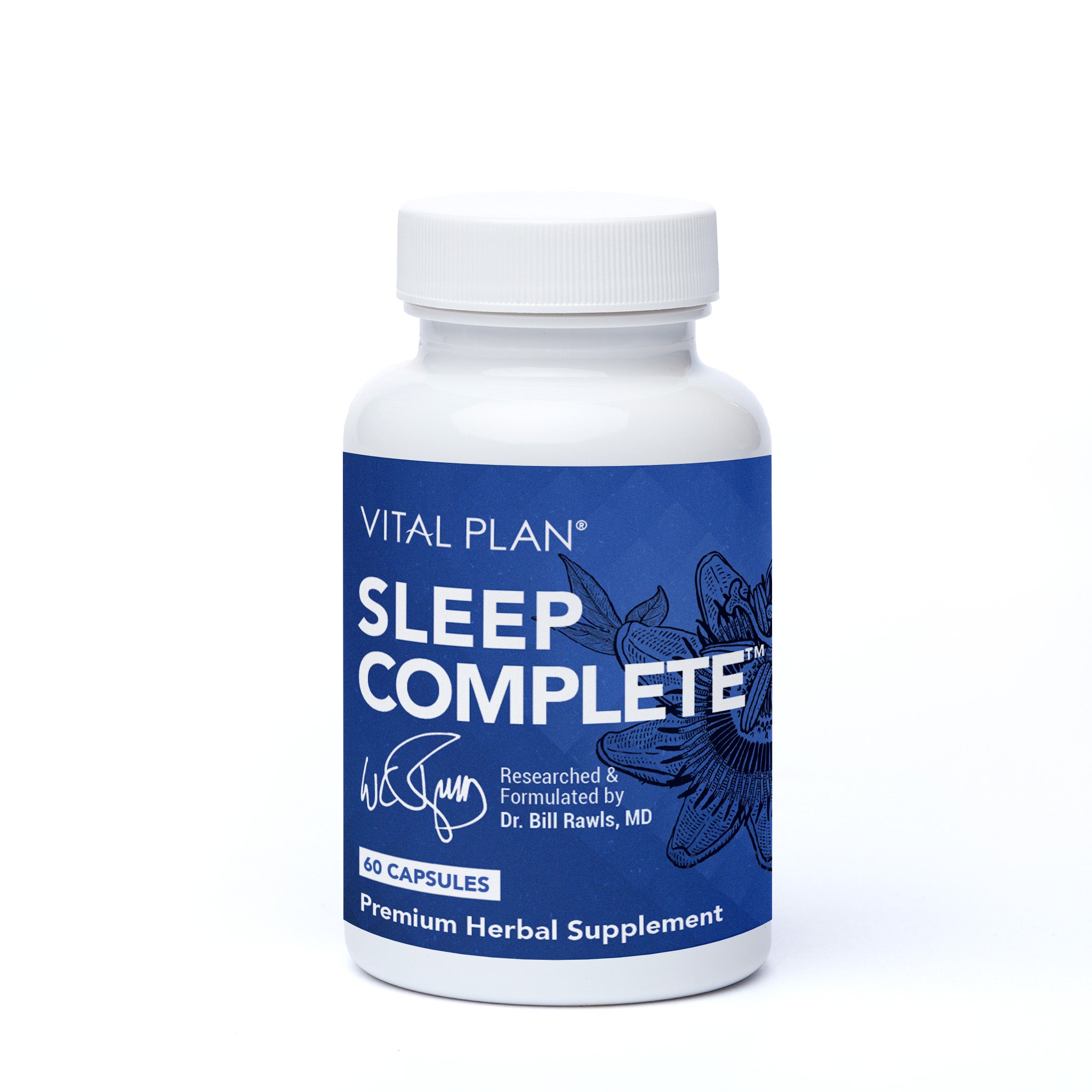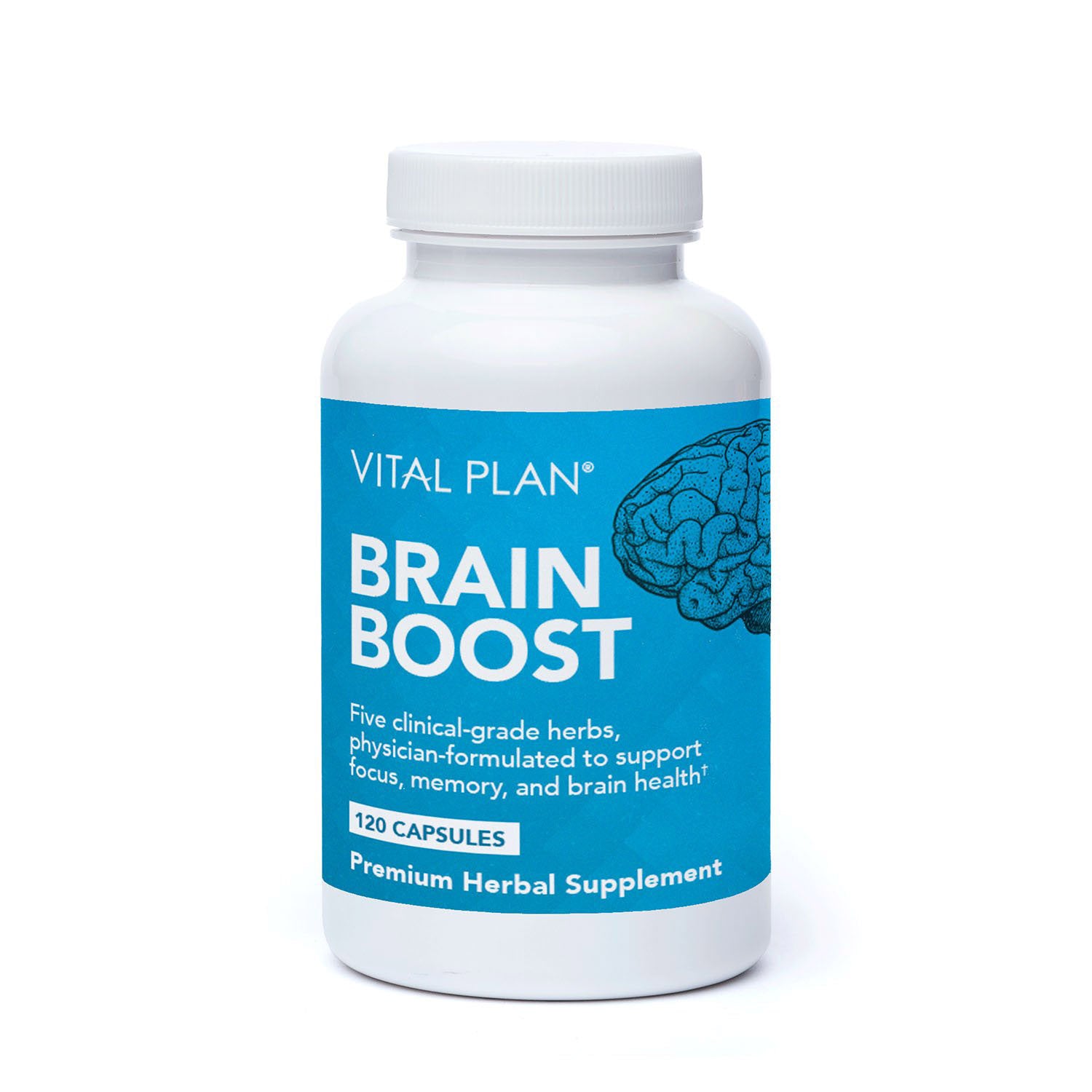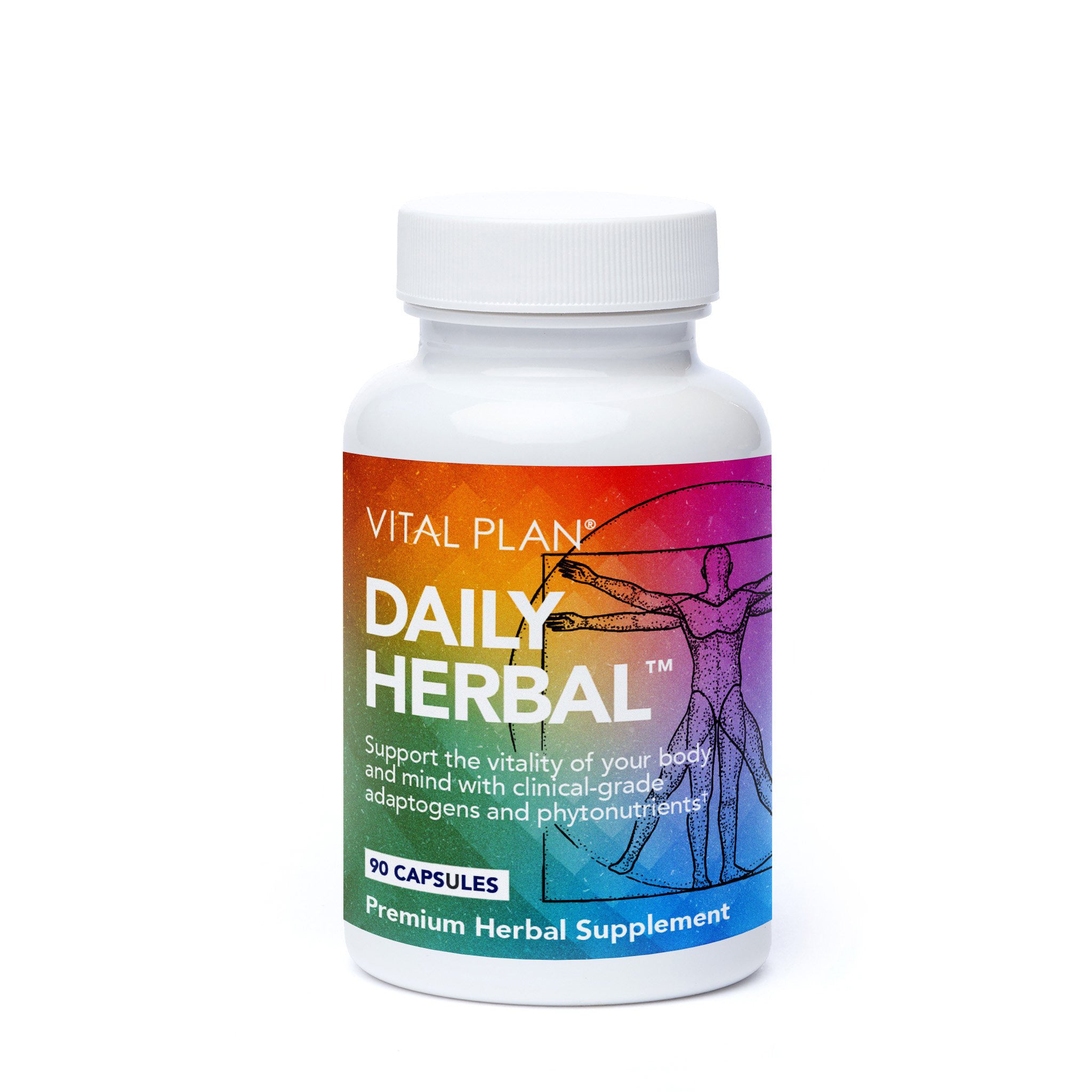This can help with a number of benefits, including improved focus & concentration, better-quality sleep, and more balanced moods.
HPA Balance 120 caps

Say Goodbye to Stress, Hello to Focus
Everyday stress happens to us all. When stress starts to become overwhelming, it can negatively impact our health, causing issues ranging from tension and depressed mood to weight gain and sleeplessness.
Unfortunately, many people seeking relief from the effects of stress are steered toward temporary “band aid” solutions. This doesn’t allow their bodies to repair and maintain the systems that are desperately in need of maintenance and rebalancing.
The physician who created HPA Balance® took a different approach. He discovered that by restoring balance in your HPA Axis, you can maintain a calm state of mind and manage your stress in a healthful way.
How HPA Balance® Works
The unique herbal combination offered with HPA Balance works synergistically to maintain normal hormonal balance and adrenal function, naturally.*
It starts at the root of your system imbalance and helps you promote the body’s ability to handle stress.
This can help with a number of benefits, including improved focus & concentration, better-quality sleep, and more balanced moods.
*These statements have not been evaluated by the Food and Drug Administration. This product is not intended to diagnose, treat, cure, or prevent any disease.
Fortunately, natural therapies for menopausal symptoms such as weight gain, hot flashes, night sweats, decreased libido, and mood swings are available. Since many women experience weight gain during menopause, many natural menopause supplements contain herbs and botanicals that support a healthy metabolism. Menopause supplements should be evaluated on proven ingredients, ability to reduce hot flashes and night sweats, ability to provide hormonal balance and boost libido and its overall value.
Overview Of HPA Balance
The product by Vital Plan is claimed to work synergistically for hormonal balance and proper adrenal function. It is said to be manufactured with a selection of natural ingredients that starts to work at the root of the body’s imbalance and helps promote its ability to handle stress.
It is sold online at an affordable rate and intended to help reverse a wide range of hormone and adrenal issues. HPA Balance Reviews, contrary to the claims about the product, varied. If you are considering giving the product a try, then, read on to learn all you may about the product before making your purchase.
Everyday stress happens to us all. When stress starts to become overwhelming, it can negatively impact our health, causing issues ranging from tension and depressed mood to weight gain and sleeplessness.
Customers Also Bought

- Save 10% on all recurring orders
- FREE US Shipping
- Never run out of your supplements
- Get email reminders before each delivery
- Modify or cancel at any time

- Save 10% on all recurring orders
- FREE US Shipping
- Never run out of your supplements
- Get email reminders before each delivery
- Modify or cancel at any time

- Save 10% on all recurring orders
- FREE US Shipping
- Never run out of your supplements
- Get email reminders before each delivery
- Modify or cancel at any time
An adaptogenic blend of natural phytochemicals that promotes immune resilience and cell health for an active life.

ABOUT BILL RAWLS, M.D.
Dr. Rawls’ groundbreaking approach to wellness comes from decades of practicing medicine, extensive research in alternative therapies, and firsthand experience helping thousands find their path to wellness. Dr. Rawls is a best-selling author and Medical Director of Vital Plan, an online holistic health company in Raleigh, N.C.

OUR PROMISE TO YOU
If you are not happy with your purchase for any reason, you are covered by our return policy.
HAVE A QUESTION?
Call us at (800) 951-2414
or fill out the form below:
Stripe is certified to PCI Service Provider Level 1, the highest level of certification.
Sign up for our Newsletter
About Us
- Our Story
- Our Quality
- B-Corp Certified
- Terms & Conditions
- Privacy Policy
- Affiliate Program
- Wholesale Program
- Rewards
- Refer-a-Friend
Customer Support
- Contact Us
- Shipping & Returns
- Subscribe & Save
- FAQ
- eGift Card Balance
- COVID-19 Update
Social
© 2022 Vital Plan, Inc. All rights reserved.
Hicks CS, Mitchell ML. The Treatment of Addison’s Disease by Whole Adrenal Gland: (Section of Therapeutics and Pharmacology). Proc R Soc Med. 1935 May;28(7):932-40. View abstract.
The appropriate dose of adrenal extract depends on several factors such as the user’s age, health, and several other conditions. At this time there is not enough scientific information to determine an appropriate range of doses for adrenal extract. Keep in mind that natural products are not always necessarily safe and dosages can be important. Be sure to follow relevant directions on product labels and consult your pharmacist or physician or other healthcare professional before using.
GRUNDY, H. M., SIMPSON, S. A., and TAIT, J. F. Isolation of a highly active mineralocorticoid from beef adrenal extract. Nature 5-10-1952;169(4306):795-796. View abstract.
MASON, H. L. and MATTOX, V. R. Chromatographic fraction of beef adrenal extract. I. Isolation of aldosterone. J Biol Chem. 1956;223(1):215-225. View abstract.
MATTOX, V. R. Isolation of 19-hydroxy-11-desoxycorticosterone from beef adrenal extract. Mayo Clin Proc 5-4-1955;30(9):180-182. View abstract.
MATTOX, V. R., MASON, H. L., and ALBERT, A. Isolation of a sodium-retaining substance from beef adrenal extract. Mayo Clin Proc 10-7-1953;28(20):569-576. View abstract.
Hicks CS, Mitchell ML. The Treatment of Addison’s Disease by Whole Adrenal Gland: (Section of Therapeutics and Pharmacology). Proc R Soc Med. 1935 May;28(7):932-40. View abstract.
Lewis CJ. Letter to reiterate certain public health and safety concerns to firms manufacturing or importing dietary supplements that contain specific bovine tissues. FDA. Available at: www.cfsan.fda.gov/
Nationwide alert on hallmark labs injectable adrenal cortex extract. FDA. Available at: www.fda.gov/bbs/topics/NEWS/NEW00539.html
- Common Searches:
No related vitamins found
You Might Also Like
CONDITIONS OF USE AND IMPORTANT INFORMATION: This information is meant to supplement, not replace advice from your doctor or healthcare provider and is not meant to cover all possible uses, precautions, interactions or adverse effects. This information may not fit your specific health circumstances. Never delay or disregard seeking professional medical advice from your doctor or other qualified health care provider because of something you have read on WebMD. You should always speak with your doctor or health care professional before you start, stop, or change any prescribed part of your health care plan or treatment and to determine what course of therapy is right for you.
This copyrighted material is provided by Natural Medicines Comprehensive Database Consumer Version. Information from this source is evidence-based and objective, and without commercial influence. For professional medical information on natural medicines, see Natural Medicines Comprehensive Database Professional Version.
© Therapeutic Research Faculty 2020.
Dr Kamhi: That is exactly right. I have been practicing herbal medicine since 1964, and I am a traditional herbalist, but I also study and teach botanical pharmacognosy. When the standardization concept arose in the 1990s—I actually was not a big fan of it. However, for anyone seriously involved in marketing herbal medicine, it became imperative to incorporate standardized products, because consumers wanted it and physicians requested it. In addition, I have learned over time that there are actually some really good pieces of information that can be gleaned via the concepts of standardization, such as getting a higher-level, reproducible targeted effect.
Ellen Kamhi, p h d , rn : Herbal Support for the HPA Axis
Ellen Kamhi, p h d , rn , ahg , ahn-bc , is a leader in the herbal nutraceutical industry and is recognized as a consultant specializing in regulatory issues, formulation, and product education. She is a professional member of the American Herbalist Guild, nationally board certified as a holistic nurse, a medical school instructor in botanical pharmacology, and an author of many books. She offers online/onground continuing education-approved herbal certification programs, and she offers Ecotours for Cures (http://www.EcotoursForCures.com) to experience shamanic healing traditions in indigenous areas of the world. Her passions include sharing her 4 decades of herbal and nutritional knowledge with individuals that will carry natural healing arts forward into the next millennium. For more information, please visit http://www.naturalnurse.com/.
Integrative Medicine: A Clinician’s Journal (IMCJ): How is the hypothalamic-pituitary-adrenal, or HPA, axis affected by gut dysbiosis?
Dr Kamhi: There are many ways that gut dysbiosis may negatively affect health and well being. Gut dysbiosis refers to an imbalance in the microflora of the intestines. It is actually a rather complex discussion, because certain organisms that might be considered dysbiotic in one person may actually be compatible to someone else. It is not necessarily one specific microorganism that overgrows versus another.
Microorganisms release a plethora of metabolites, including hormones and waste products, all of which can act as triggers to pathways and normal hormone production linked to the HPA axis within an individual. One example would be Candida albicans. It is a normal component of gut flora and usually exists without causing negative health issues, but it can also overgrow and cause the host individual to exhibit a variety of symptoms, such as gastrointestinal issues, bloating, diarrhea, constipation, skin rashes, tiredness after eating, and sugar cravings. Specific metabolic waste products are responsible for these symptoms, such as the neurotoxin, acetaldehyde, which is linked to “brain fog” and depression, typically experienced by those with a Candida overgrowth.
In addition, Candida and other yeast forms grow root-like structures called mycelia, which can interfere with gut integrity and literally “punch holes” in the gastrointestinal lining. These same phenomena can also occur in the oral cavity in gum tissue. Microbes travel through these fissures from the gums to other parts of the body and can lodge in the heart and other organs. The small fissures in the cell membranes also allow other larger particles that are normally confined to the gut to escape into interstitial serum and the circulatory system. This phenomenon—referred to as intestinal permeability, or “leaky gut”—is one factor that initiates an inflammatory response. Also involved in this inflammatory cascade are immune complexes, formed when the immune system attempts to destroy the large misplaced particle by attaching to it and, thereby, forming a “complex.”
Microorganisms actually release their own hormones, which can interact with hormones produced by the organs of the HPA axis—the hypothalamus, pituitary, and adrenal glands. Specific microorganisms have been shown to release hormones that might stimulate hunger centers in the brain, possibly causing sugar cravings. Our bodies normally have a hormonal system of checks and balances. There is a hormone referred to as fibroblast growth factor 21, or FGF21, that is produced in the liver in response to a high carbohydrate level in our bodies. This hormone helps to suppress sugar craving signals from the brain. However, microorganisms need sugar for survival and growth. They use the available carbohydrate at a much faster rate than our body would on its own. That action decreases the production of FGF21 and, therefore, overrides the suppression of sugar cravings.
Through this and other mechanisms, dysbiosis interferes with normal HPA-axis homeostasis. It is all an integrated system, where there is a huge interplay between the HPA axis and various hormones, some of which are just beginning to be discovered. For instance, orexin, also referred to as hypocretin, is a neurotransmitter that regulates arousal and wakefulness, as well as appetite. Orexin deficiency is involved in the interplay between sleep disorders and weight gain.
Orexin is produced by a few specialized cells in the hypothalamus. The axons from these neurons extend throughout the entire brain and spinal cord. Orexin is decreased by high levels of glucose. Levels can be supported by increased intake of amino acids, such as aspartate, alanine, serine, cysteine, and glycine. Stress converts these amino acids to glucose, thereby decreasing orexin and interfering with healthy sleep cycles. There is interplay between the stress factor, the inflammatory factor, and the gut dysbiosis factor, which are all linked to the complex interplay within the HPA axis.
IMCJ: Is the interaction between bacterial hormones and the human system a specific adaptation or a happy coincidence for the bacteria?
Dr Kamhi: It is difficult to discern whether this hormonal interplay is a specific adaptation or a happy coincidence. We certainly do know that microorganisms can definitely adapt. This is the same mechanism which can lead to the development of resistant bacterial strains, linked to the overuse of antibiotics. There are several mechanisms that are involved with this adaptation. One of these mechanisms is linked to the regulation of the multi-drug-resistant pump, or the MDR pump. Cells contain a mechanism called an MDR pump that recognizes “unknown” chemicals, such as an antibiotic, which stimulates the activity of the MDR pump to remove the chemical. Microorganisms have adapted this naturally occurring process to their own benefit. They become competent at upregulating the MDR pump, which then pumps the antibiotic out of the cell and the microorganisms are, therefore, able to survive.
As is often the case, natural substances can have an advantage over chemical pharmaceuticals. In the case of antibacterial substances, berberine is a naturally occurring alkaloid found in several botanicals, including goldenseal, barberry bark, and Oregon grape root. Berberine has been found to inhibit the action of the MDR pump. This leaves more of the antibacterial substance in the cell to kill bacteria. Perhaps that helps to explain why taking a natural antimicrobial agent that contains berberine does not lead to the development of resistant bacterial strains.
IMCJ: You said that stress causes a cascade that converts amino acids to glucose. Considering its role as our stress compensation system, would you say that that particular process can turn the HPA axis against us?
Dr Kamhi: As is often the case, there is no clear answer to cover all situations, so it depends. Look at the particular activity of the various hormones related to the HPA axis. Let’s consider cortisol. Cortisol depresses the immune system and raises blood sugar—an adaptive mechanism often referred to as “fight-or-flight.” This is an immediate reaction to a threat and is actually advantageous to escape an immediately dangerous situation, and supports an immediate life-saving reaction if you have to run away from something really quickly. Cortisol also narrows the arteries, whereas epinephrine—released by the adrenal medulla—increases the heart rate.
The maladaptation to this same mechanism occurs when the spurt of cortisol does not turn off after a short period of time but rather becomes something that is ongoing. In a normal situation, the stress situation is resolved and the hormone levels downregulate back to normal. Long-term cortisol release does not allow the normal downregulation response. This leads to a variety of symptoms including sleep disturbances, migraine headaches, obesity, belly fat accumulation, thyroid dysfunction, digestive complaints, and leaky gut syndrome. This also leads to low energy, fatigue, low emotional states, and depressed immune function.
IMCJ: What other endogenous factors impact the HPA axis?
Dr Kamhi: The HPA axis is complex, and I believe the term complex is actually an oversimplification. In addition to the hypothalamus, pituitary, and the adrenals, other glands, including the thyroid and pineal gland, are also involved. In my opinion, the pineal gland is too often left out of this discussion.
The pineal is incredibly interesting. If you look at where it is in the brain, it sits right near all of those other glands. The pineal secretes melatonin, which regulates the circadian rhythm cycle. The circadian rhythm describes 24-hour cycles in the body, such as the sleep cycle and temperature cycle. It is initiated by exposure to darkness and light, as well as interplay between all the hormones that we discussed previously.
The pineal gland is also recognized as a spiritual center throughout history and is often represented by a pine cone. This symbol shows up in ancient Egyptian artwork as the staff of Osiris, the Egyptian god of the underworld, and is also surrounded by the 2 serpents of the Kundalini, a common symbol found in Eastern practices. Biochemical human electrical energy can also be linked to the pineal gland. A common medical symbol is a staff with a solid center, which represents the spine, and a pine cone on top, which represents the pineal gland. It is also thought to facilitate altered states of awareness in those people who have had their “third eye” opened or are a seer. On a somatic level, it is interesting to note that the pineal gland rests behind the sphenoid bone where all of the fascia attachments gather, and every corresponding contraction initiated by external stimuli, such as a threat or reward, mechanically interacts with and squeezes the pineal gland, which then releases hormone messengers.
From a complete, natural-healing perspective, it must include references to the spiritual self, the emotional self, and psychological activity that is so intimately linked to not only the spiritual, but the physical as well.
Melatonin production occurs only when the pineal gland is influenced by the presence of darkness. Melatonin is also known as N-acetyl-5-methoxytryptamine. Its precursor is serotonin, or 5-hydroxytryptamine. There are many pharmaceutical therapies based on serotonin reuptake inhibitors, known as SSRIs.
As we investigate the mechanism of action of these drugs, I question the basic nature of this kind of medical intervention. While SSRIs do keep the serotonin in the nerve synapse for a longer period of time—because it downregulates the natural reuptake mechanism—in due course, this action leads to the serotonin being used up. It interferes with its natural replenishment. So, of course, these drugs only have a short shelf life in terms of how long they are going to be helpful.
It is so much better to look at how we can help our pineal gland manufacture and secrete more melatonin. We can accomplish this by assuring we have complete darkness, which can be challenging in today’s world. Also, providing building blocks, such as tryptophan, is useful. That is why 5-hydroxytryptophan, known as 5-HTP, is also used as an aid in sleep and relaxation. There are 3 wonderful herbs that can be helpful: fenugreek, spearmint, and fennel seeds. All 3 of these support the body’s ability to increase its natural production of melatonin.
Also, meditation is effective. If that sounds too Eastern and too mystical for some people, it can simply be prayer or another more Western approach called mindfulness. There is actually quite a bit of very good mainstream research measuring melatonin and serotonin levels, which are positively influenced by these relaxation techniques.
The discussion related to the importance of sleep is escalating in mainstream America. I think one of the big issues is light pollution. In our regular, daily lives, rarely does anyone go to sleep when it gets dark and wake up when it gets light. Most people are over-viewing computer screens, which emit a blue light that actually interferes with hormonal regulation. There are programs available for download, which lower the emission of blue light later in the day, to allow the melatonin cycle to initiate with less interference.
IMCJ: Let’s talk about fenugreek, spearmint, and fennel seeds. What forms of these herbs work well for promoting melatonin production? Are we talking tinctures? Are we talking teas? Sprinkling them onto foods?
Dr Kamhi: The answer is actually all of the above. You can use fenugreek seeds in food, take capsules, or use it as a liquid extract. Each method will offer a different dose, so refer to the product label. A usual dose of fenugreek would be 1000 milligrams per day, or approximately 1 gram.
IMCJ: How about spearmint? Are you just talking about a mint tea?
Dr Kamhi: Mint is well known traditionally as an herb that helps to soothe digestion. It also has antimicrobial effects, which are fantastic when talking about that gut-brain barrier interference we discussed earlier in terms of the implications of dysbiosis.
These really simple traditional remedies are wonderful, especially when considering the low incidence of adverse effects, unless someone has an allergy. Spearmint effects include antimicrobial action, relaxation, stress reduction, and reduced cortisol. These herbs also supply natural amino acids that may help support serotonin production within the body. Just drink a good-quality tea or grow your own and pick it yourself!
IMCJ: With fennel seed, I would imagine that most often you would be sprinkling that into food. I know they are usually a component in sausage; that is where I run into it most often.
Dr Kamhi: You may also encounter fennel seeds when leaving an Indian restaurant. They usually have fennel seeds as you walk out as a little treat. That is a traditional ethnic practice gleaned from Ayurvedic medicine. At the time that practice was developed, they did not have a chemistry laboratory to investigate the active constituents and know all the nutritional components that are naturally occurring in fennel seeds. We know now that this herb also helps to destroy harmful bacteria.
As is so often the case with ancient traditional remedies, they did not have our modern language such as “gut-brain connection,” nor were they able to evaluate the fact that fennel seeds contain numerous flavonoid antioxidants, such as quercetin. However, they used fennel to help health issues, which we now understand may be linked to leaky gut. In addition, fennel is a very rich source of fiber and contains volatile compounds such as limonene and pinene.
Whenever we review old-fashioned, traditional remedies such as the Ayurvedic tradition of eating fennel seeds at the end of a meal, we often see that when we bring modern science into the mix and look at the mechanism of action of these ancient traditions, we can begin to appreciate why they work.
Fennel seeds can be chewed or taken as a tea or as an herbal extract to help relieve gas and indigestion. They have a very good safety profile. Of course, anything could be toxic in very high concentrations or if someone has a particular sensitivity.
IMCJ: You said you had some other herbs you wanted to talk about.
Dr Kamhi: I would like to mention a few herbs that are less well known, which offer a myriad of positive effects as natural remedies to help regulate circadian rhythms, affect sleep balance, decrease overrelease of cortisol, and bring down the inflammatory compound nuclear factor kappa B. Chronic inflammation, of course, has everything to do with all chronic illness, so it is really one big picture.
One herb that is very interesting is Cordyceps. Cordyceps is actually a fungus that grows out of worms. Its name in Chinese translates to “winter worm-summer grass,” which reflects this transformation. Newer varieties are being grown on nutritional yeast, which makes that variety of Cordyceps acceptable to vegans. Evidence-based, proven effects of Cordyceps include antitumor action, immunomodulation, inflammation reduction, and the reduction of cortisol.
In ancient times, Cordyceps was used by emperors and wealthy royal families. It was treasured like gold and only the rich and famous could use it. Now, of course, it is a lot more widely available.
Cordycepin is one of the active constituents contained in Cordyceps that has been widely researched. It is an inflammatory inhibitor, modulates kinase, and slows detrimental aggressive reactions in connective tissue that lead to joint damage in arthritis.
Cordyceps interferes with the cytokine pathway that is initiated by stress. Usual dosage is 3 to 9 grams per day, used as a liquid or powdered extract. It is generally considered safe. It has been used for thousands of years with very few reports of any toxic side effects.
IMCJ: When you say 3 to 9 grams, are you referring to Cordyceps mushrooms or the cordycepin?
Dr Kamhi: Three to 9 grams would refer to the full mushroom ground up. The dosage would be lower if you are getting a standardized product where one active constituent is extracted. It may have a more targeted effect, but sometimes, by using standardized herbs prepared by extracting one active rather than just measuring and assuring a specific amount of an active, you may lose the complementary modulation of the other naturally occurring components.
That is what pharmaceutical drug therapy often does. It extracts out one active constituent, concentrates it, and administers it in a targeted manner. This is often the cause of a wide range of adverse effects.
IMCJ: It sounds similar to extracting the cannabinoids in Cannabis, and not having the terpenes available, or some of the other synergistic molecules that also work with and help to regulate their action on the body.
Dr Kamhi: That is exactly right. I have been practicing herbal medicine since 1964, and I am a traditional herbalist, but I also study and teach botanical pharmacognosy. When the standardization concept arose in the 1990s—I actually was not a big fan of it. However, for anyone seriously involved in marketing herbal medicine, it became imperative to incorporate standardized products, because consumers wanted it and physicians requested it. In addition, I have learned over time that there are actually some really good pieces of information that can be gleaned via the concepts of standardization, such as getting a higher-level, reproducible targeted effect.
Also, standardization allows growers to fine-tune growing and harvesting practices that will naturally yield the highest amount of active constituents. Examples include harvesting in the morning versus at night or before or after a rain.
When you look at a bottle of herbs and it says standardized, you actually do not know which method of standardization has been used. Has the whole plant been harvested and just measured for a particular active, such as echinacosides in Echinacea, or was a single chemical extracted and put directly in the capsule? Both methods will simply say standardized on the label.
IMCJ: So there is no way to tell?
Dr Kamhi: You can call the company and ask, but there is often no other way to tell.
IMCJ: In your practice, do you prefer the former?
Dr Kamhi: Yes, in my opinion there is a lot to be said for getting plant medicine as close to nature as possible. In fact, I actually take people out into the field to wildcraft, or gather our own plants and make them into medicine. In this situation, there is no standardization or measuring of actives, but there is the immeasurable energetic interaction between the person and the plant. That is actually my favorite way to use herbal medicine, but that is only for the few who are interested in participating in their own health to that extent.
IMCJ: What other herbs for HPA support might be generally overlooked?
Dr Kamhi: Mimosa and magnolia are both wonderful additions to help balance the HPA axis. Magnolia was named after Pierre Magnol, a French botanist who participated in botanical nomenclature. Magnolia contains compounds which bind to several important targets that are associated with drowsiness, which, of course, is affected by the dysfunction of the HPA axis and melatonin disruption.
Magnolia binds to both serotonin and norepinephrine transporters and is also involved with GABAA, so it is no wonder that it has been used to regulate cortisol and mood, as an anti-inflammatory that suppresses nuclear factor kappa B and enhances GABA neurotransmission in the neurons. PubMed lists several current studies that discuss these mechanisms.
IMCJ: Is that the flower, the bark, or the root?
Dr Kamhi: That is a very good question because, with each herb, a different part of the plant is used as the medicinal component. In terms of magnolia, the bark is usually used and occasionally also the flowers. Also, always be aware of safety precautions, particularly in pregnancy. Magnolia may have an oxytocic effect, which can stimulate uterine contractions. However, toxicology studies in animals have found that doses as high as 5 grams per kilogram only gave mild side effects.
IMCJ: What about the mimosa?
Dr Kamhi: Isn’t that a beautiful tree? The flowers remind me of a book written by Dr Seuss, which features a Truffula Tree. It has a beautiful, delicate, aromatic fantastic flower! The genus and species are Albizia julibrissin. It is known as the tree of happiness. It calms the spirit and relieves constrained emotions. It is useful as a nervine for anxiety and offers antimicrobial, antioxidant, anti-inflammatory, hepatoprotective, and lipid-lowering effects.
These effects are due to the wide array of bioactive compounds found in mimosa, particularly saponins—such as triterpenes and monoterpenes, flavone saponins, quercetin, and isoquercetin, which help to protect the cell and rebuild healthy gut linings. It is also a nervine with immune-regulating and cancer-inhibiting effects. Mimosa influences 5-HT receptor binding, as well as the GABA, dopamine, and serotonin, which is helpful for depression, anxiety, and irritability. Mimosa is an underused herb, which is now coming into more popularity. Dosing recommendations include 3 to 6 milliliters of mimosa liquid extract or 500 milligrams per day of dried herb in capsules. For my wildcrafting students, we go out and pick the flowers and just throw them in a cup, add some boiling water, let it steep, and then strain and drink. Although we do not know the exact dose in that case, we have the added joy of hands-on interaction with the plant.